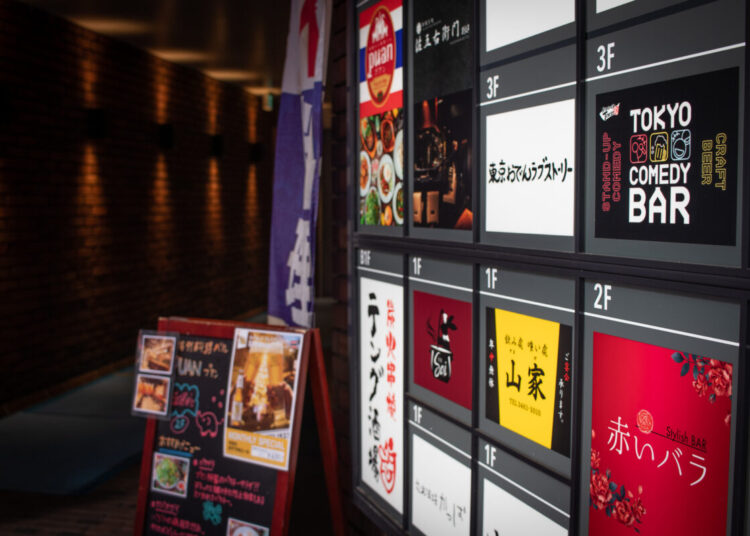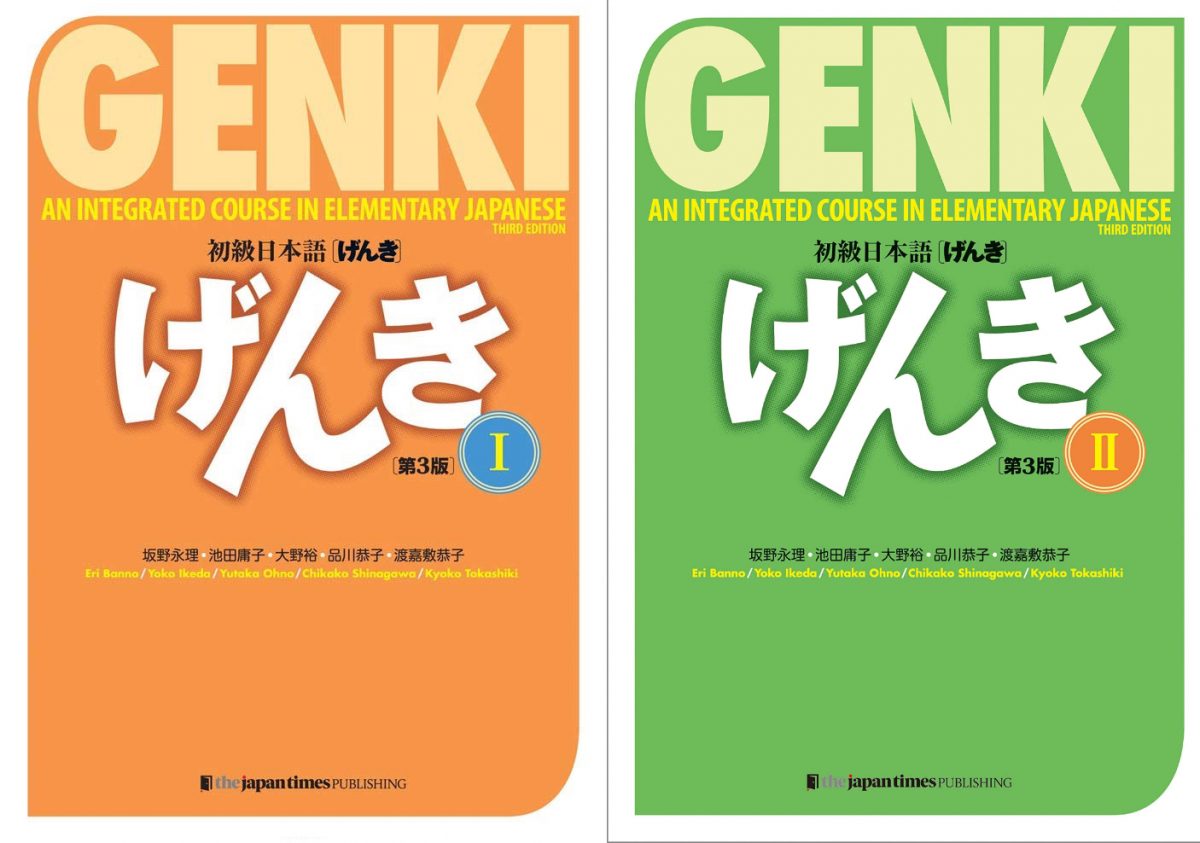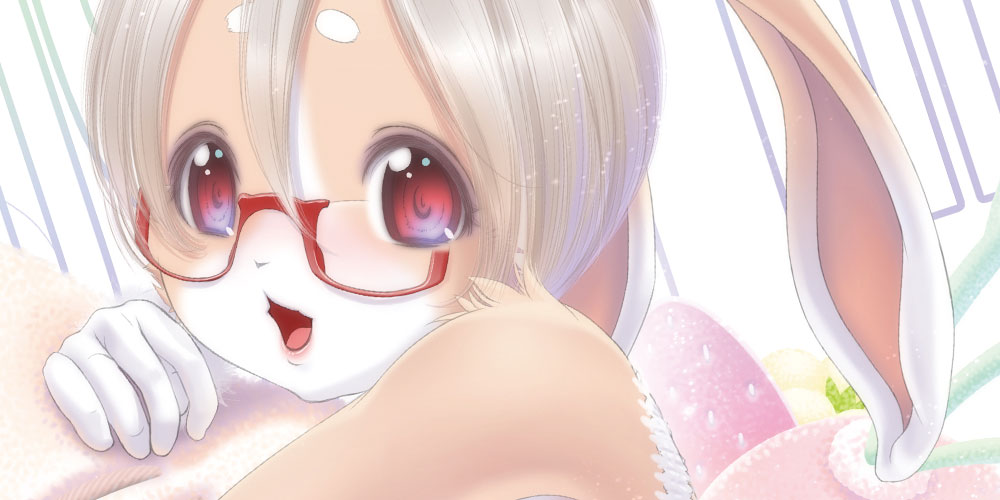It seems to me like every otaku’s dream is to learn Japanese, whether it is to understand anime better or have more of a selection of games to play. Personally, I can’t think of a better way to do so than with a kawaii kitsune at your (virtual) side!
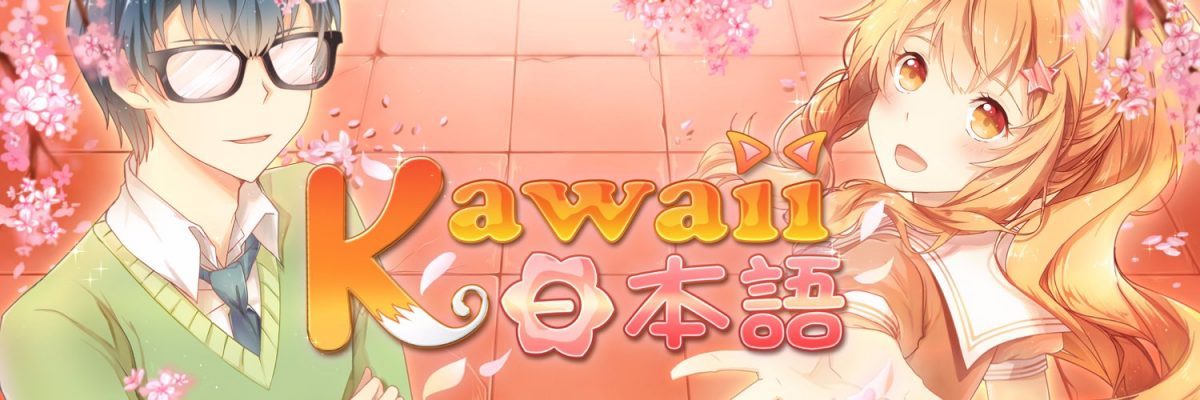
Welcome to KawaiiNihongo and KawaiiDungeon!
These are two mobile apps (for both Android and iOS) by MardukCorp designed to teach you Japanese. KawaiiNihongo was the first and it plays out like a simple visual novel in a modern(ish) setting as you interact with Riko, the mentioned kawaii kitsune. Yuuji, Riko’s overprotective and completely smitten male best friend, and Aoi, Riko’s red-headed female friend, also join in the fun. Riko acts as our main guide to the various locations on the city map: the school, the arcade, the bookstore, and the shrine. I’ll go over these locations, the gameplay mechanics, and my thoughts on the game. Let’s get started!
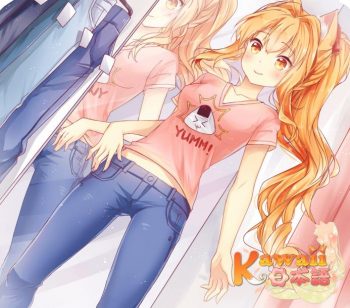
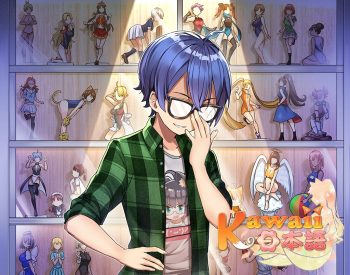
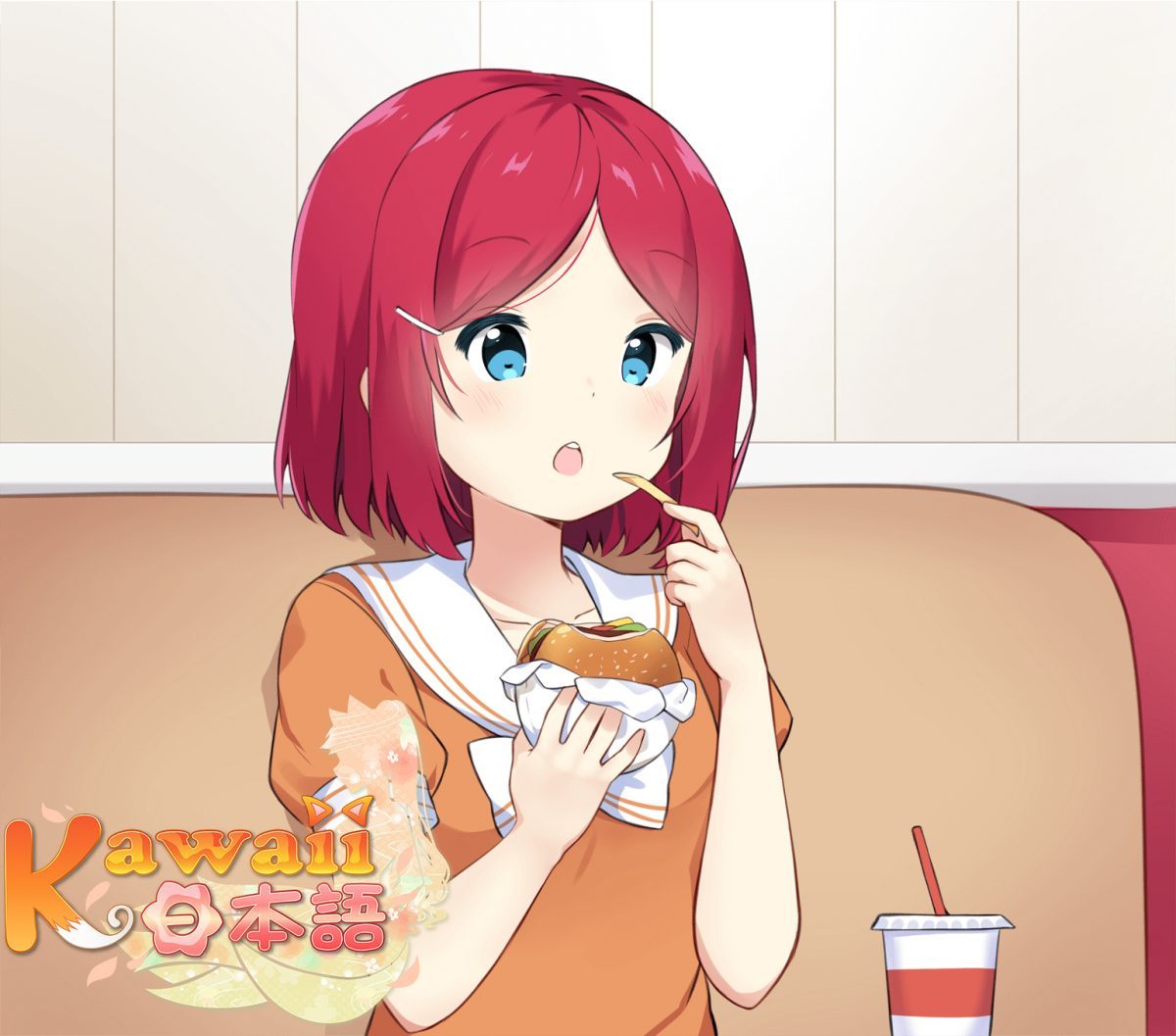
The School
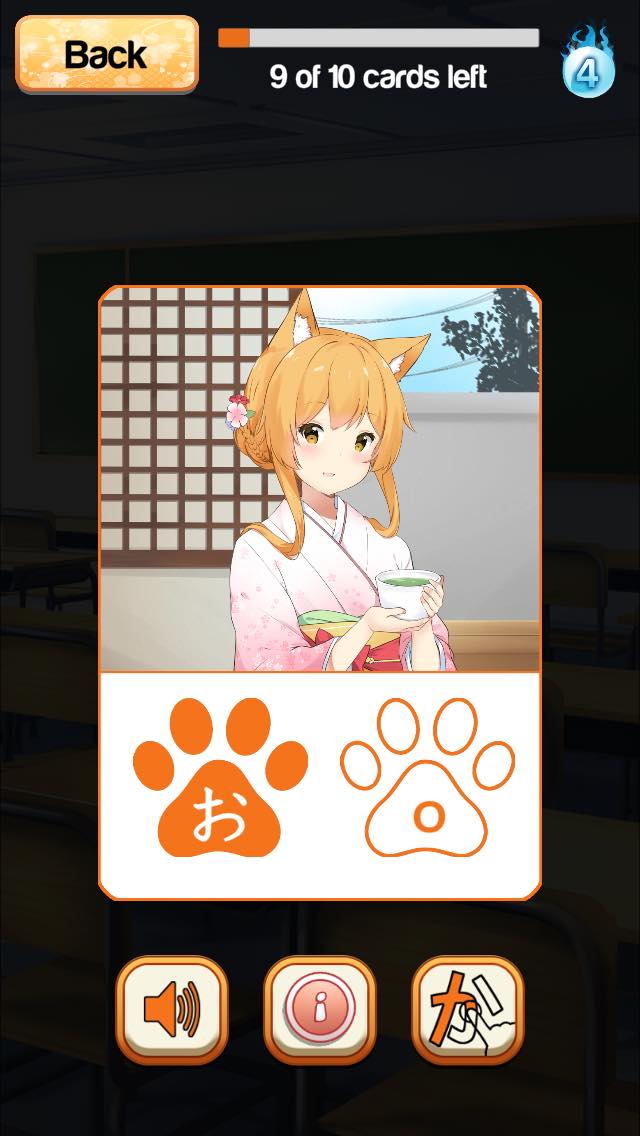
While this game has a few visual novel aspects, the main focus is on learning Japanese, so the school is a big deal. When you take your first virtual step into the school halls, you have two choices: the classroom or the kana room.
The kana room has a full list of all of the hiragana and katakana kana (kana is the word for the Japanese alphabet). Generally, I find kana rooms to be a nice addition to any Japanese study guide, since mastering hiragana and katakana is crucial to learning Japanese.
When I went into the classroom for the first time, I had the option to take a placement test or start from the beginner lessons. I was curious about the beginner lessons, so I went with that first. I was impressed by the broad range of skills covered by the lessons. They cover reading, writing, listening, as well as the pronunciation of kana, vocabulary, and sentences. For speaking lessons, you do have to give the game permission to use the microphone on your device.
In each lesson, a card is shown with a picture referencing the new kana, vocabulary, or grammar. Like the picture here, representing o for ocha, which means green tea. It’s a really fun way to practice association with the words, and the art is genuinely cute! In addition to the picture, you have: the new word (in both Japanese and English), stroke order (kana only), and the pronunciation (for both the listening and speaking practice). This provides a very solid foundation for beginners who want to learn Japanese.
As a reward, you gain experience and stamps as you complete lessons and level up. You can set your daily experience goal from Casual to Determined, depending on how much time you want to set aside for your Japanese lessons.
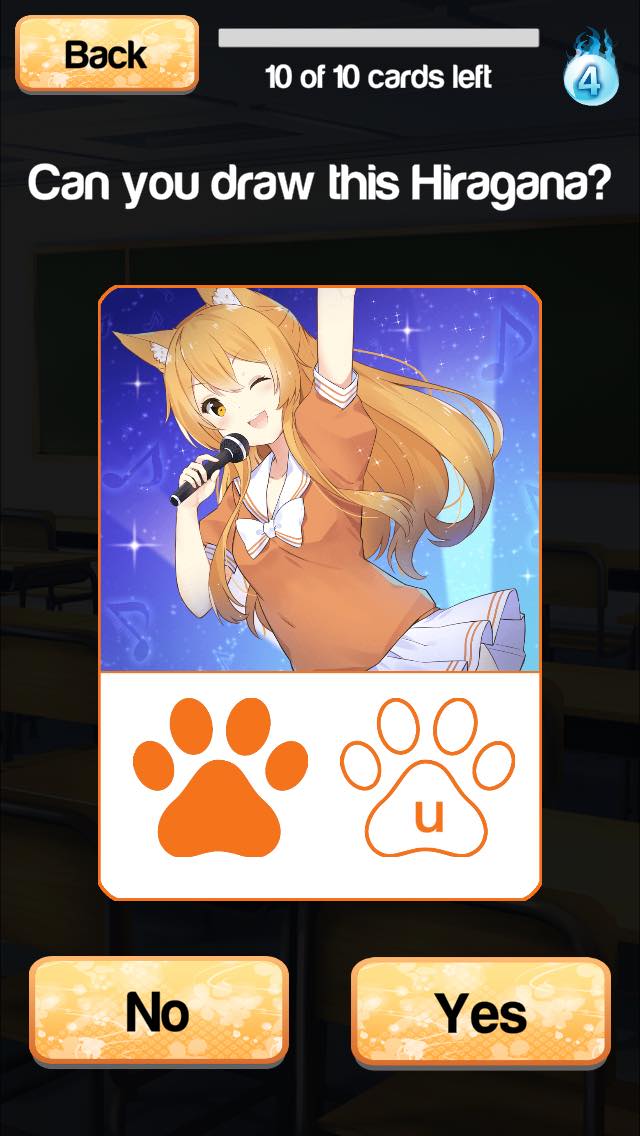
Advancing Your Japanese
There are checkpoints to see how much you remember after every seven lessons. The checkpoint can be completed at any time, so you can take them as soon as you feel ready to, which is really nice.
The lessons cater to advanced learners too, so if you already know some Japanese, KawaiiNihongo is still beneficial. The game teaches both grammar and kanji. For grammar, the sentences start simple and gradually get more complex. In terms of learning kanji, my favorite part of their system is that it gives you the option to learn the kun’yomi and on’yomi readings. These are ways the kanji is read, based on the origin of the readings (on’yomi from China and kun’yomi from Japan). This is an important aspect of learning kanji, since the way kanji is read generally changes from kun’yomi to the on’yomi reading based on whether the kanji is by itself or is paired with hiragana or another kanji. For example, the kanji 出 can be read as しゅつ or shutsu for the kun’yomi (meaning “out” in English). However, if it’s written as 出る, the first kanji is translated in the on’yomi reading of de for the word deru, which means “to get out”. They are very similar in meaning, but the reading of the kanji is very different. So, this is a huge plus for those who are already learning kanji.
KawaiiNihongo’s Other Locations
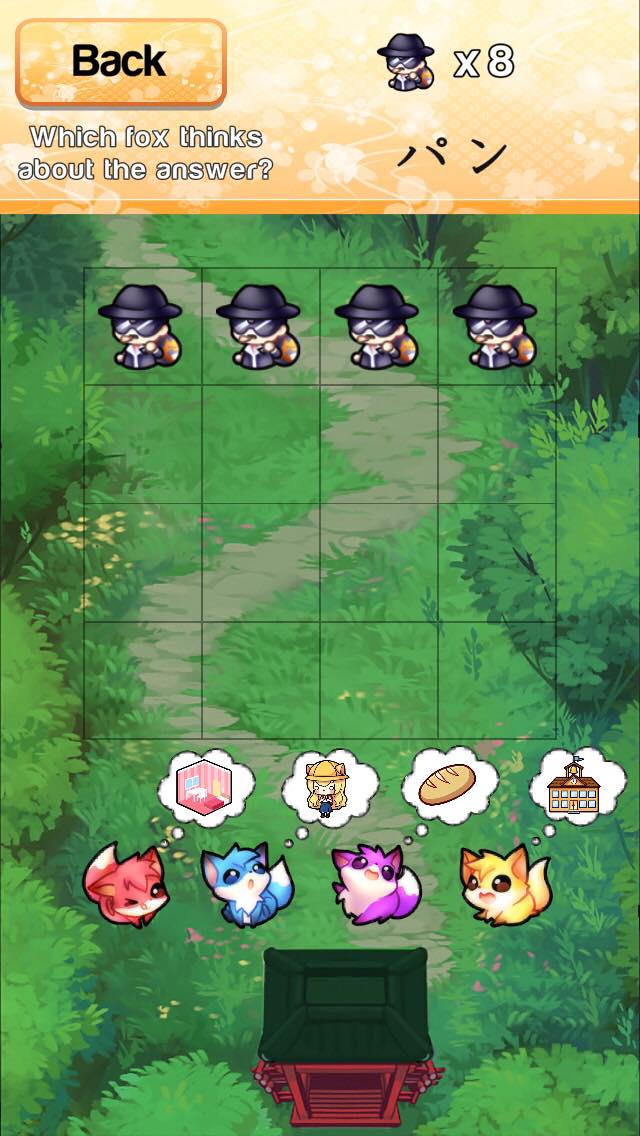
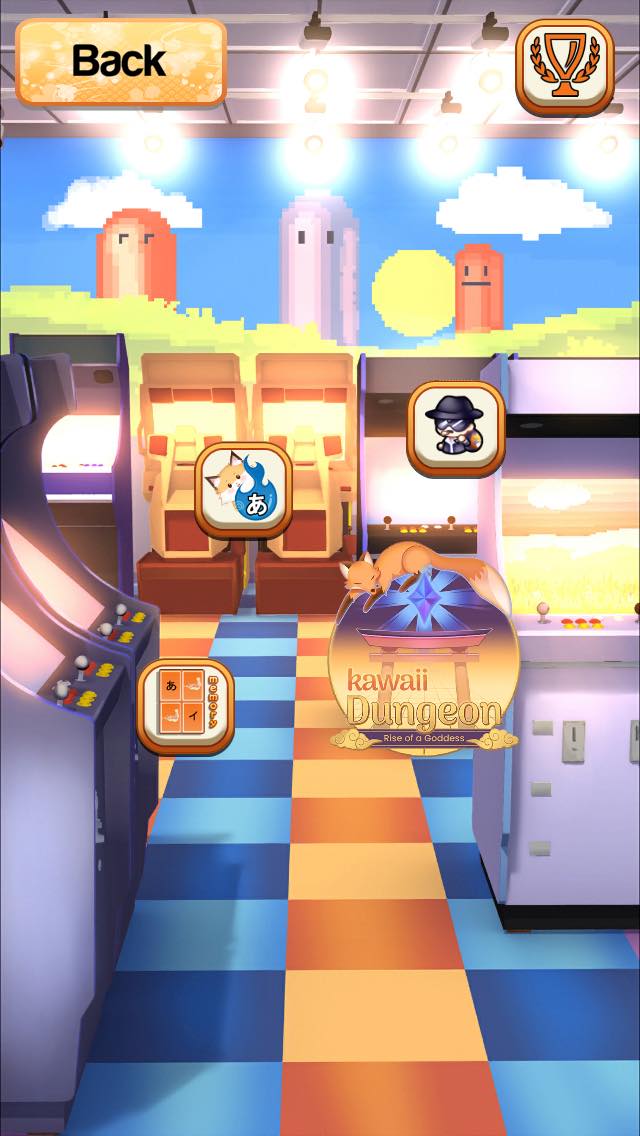
The Arcade
The next location is the arcade, where you can play various games based on the lessons you’ve done. Playing them earns you MarduKoins, which can be spent at the bookstore.
The first game available is a matching game where you can match the two same hiragana or the hiragana and their matching English translation. After the first grammar lesson, you can unlock the game Nihongo Dash and, after completing the first six grammar lessons, you can unlock the game Foxes vs Gangsters. Personally, I like Foxes vs Gangsters best. Seeing pictures of the mini-game in the app store was actually one of the reasons I decided to check it out. There was something extra kawaii about this concept and it totally didn’t disappoint. The last game in the arcade is KawaiiDungeon, and it is actually a link to their other app, which I’ll talk about later.
The Bookstore
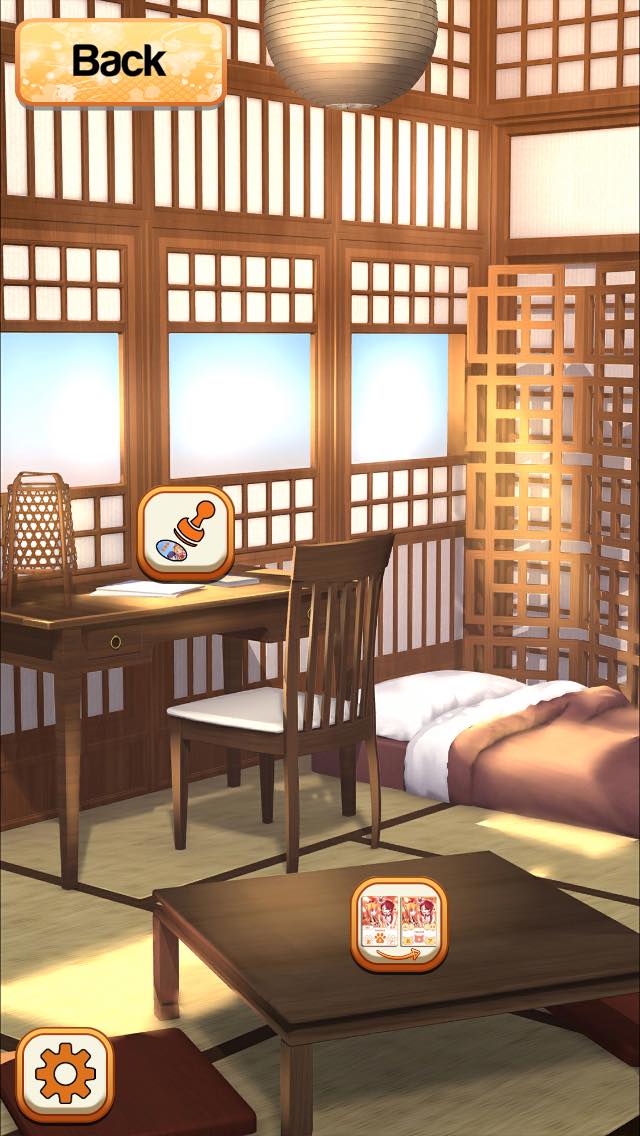
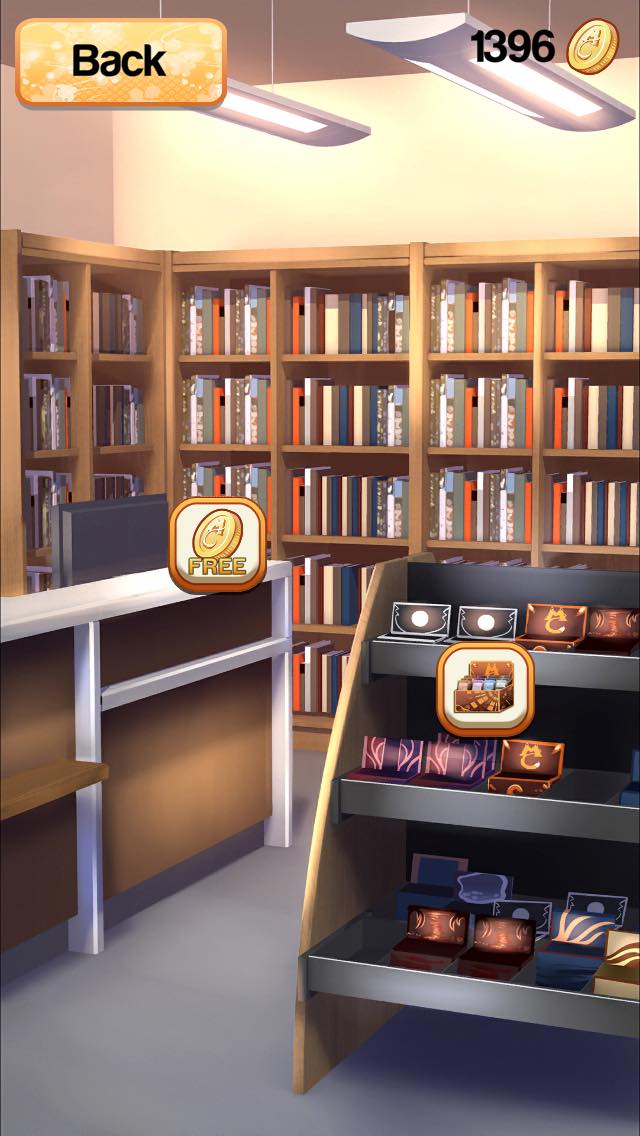
At the bookstore you can get more MarduKoins by taking surveys, or spend your MarduKoins or real currency to get access to “KN Gakusei” subscription features, like downloading lessons for offline use, no ads, customizing the kana card layouts, and more. It does take quite a bit of MarduKoins for the free subscription. The premium subscription is around a dollar a month, or less if you buy a six-month or year subscription.
The Shrine
The last location is the shrine, which has the least things to do but is still a notable place. Here you can track your stamp progress and see your current collection. Also, if you have the KN Gakusei subscription, here’s where you can change the card layouts to the various cute options they have available.
Improvements I’d Like To See
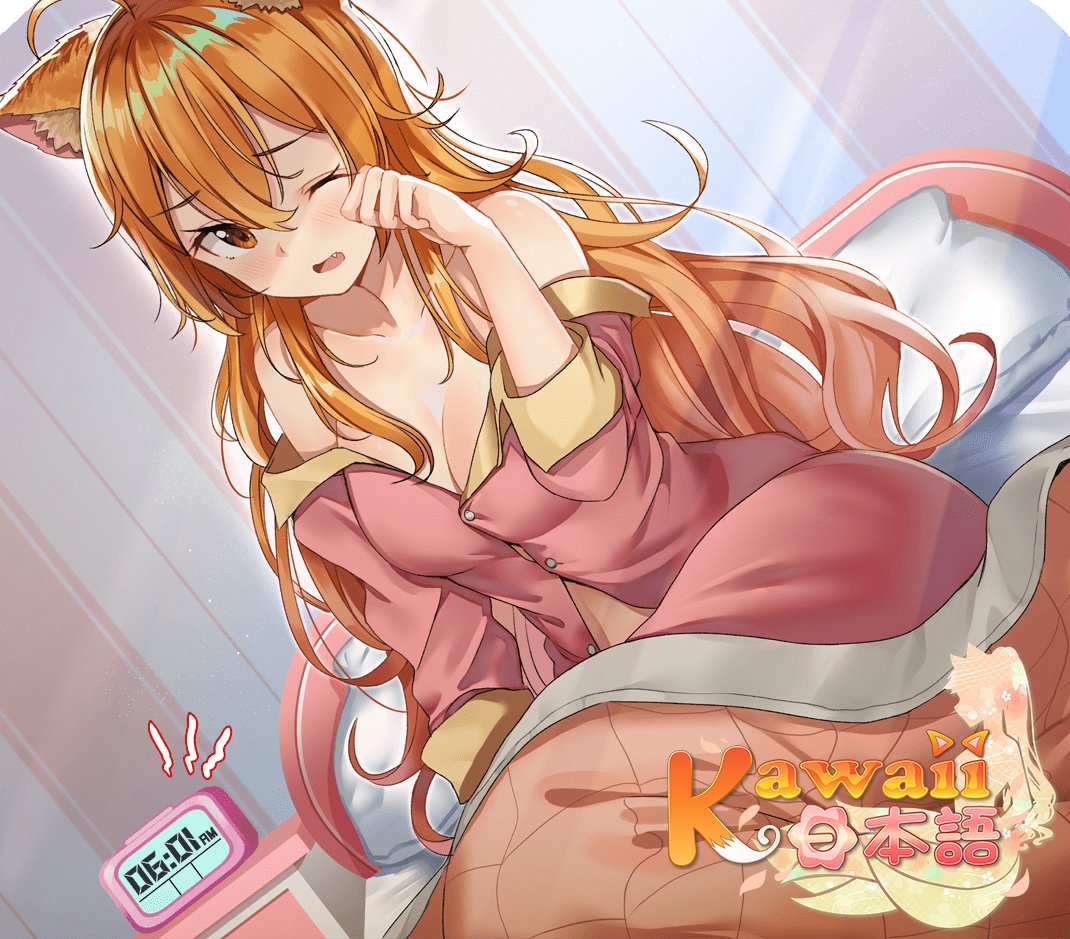
Not every game is perfect, so despite all the things I like about KawaiiNihongo, there are a few things that I wish were done differently or better.
First, I wish the visual novel aspect of the game was more prevalent. After the introduction of the game and each of the locations, there isn’t a lot of interaction between you and the characters, which was a letdown. It is partially made up for by the pictures on each card giving clues as to what the characters are like. Aoi doesn’t even feature in the opening scene, unlike Riko and Yuuji, so her personality has been really hard for me to figure out. I was hoping that, as I cleared more lessons, I would have more interactions with them, but so far it hasn’t happened.
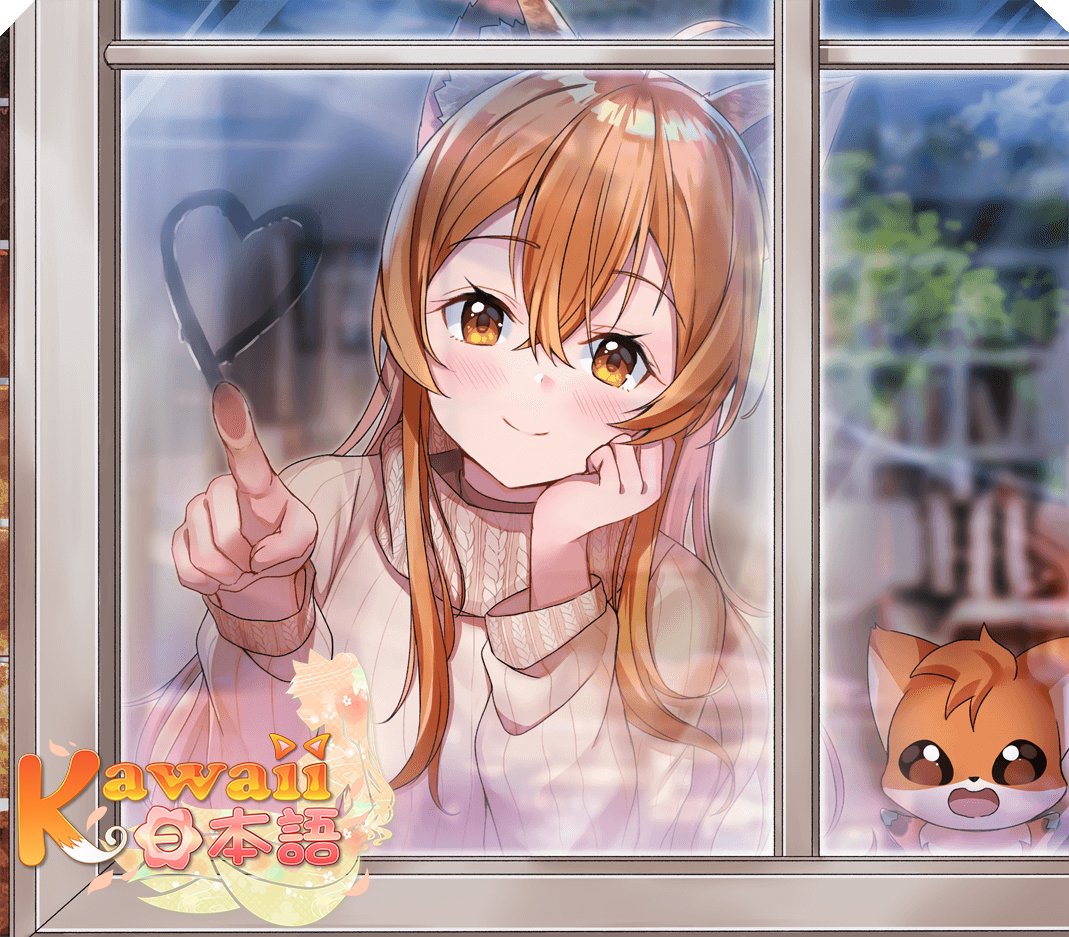
Secondly, I wish we could collect the pictures and view them as rewards, instead of the stamps. There isn’t a way to look at the pictures again other than in the lessons, which is disappointing since the artwork is lovely. You can find all of the artwork on the KawaiiNihongo Facebook page and the KawaiiNihongo Twitter account, but it would be a more motivating reward than the stamps. Riko is insanely adorable, so I want to collect all the pictures showing her cuteness.
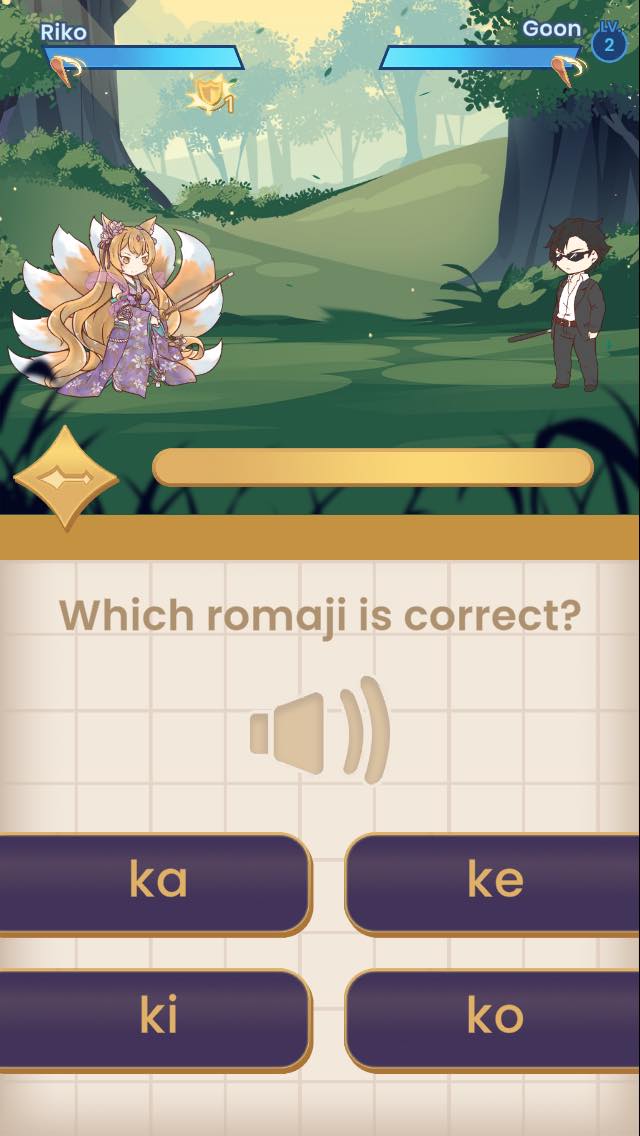
KawaiiDungeon: Rise of A Goddess
In KawaiiDungeon: Rise of A Goddess, you take the RPG-style route of learning Japanese, fighting off the evil MardukCorp goons and leveling up Riko and her weapons. The lessons are simpler than the KawaiiNihongo lessons, but the apps go hand-in-hand with each other.
In some ways, this app feels like a much more extensive arcade game with a fantasy-esque feel to it. However, it definitely is another fun game to practice your Japanese skills with, especially for those who like RPG-style games. Fight goons and bosses and level up your Japanese skills!
Final Verdict
Overall, as a lover of Japanese games, language, kawaii, and kitsune, I had to try out this app and I wasn’t disappointed. In fact, even with the couple of disappointments, I found it exceeded my expectations. So, let’s learn Japanese together with Riko, the kawaii kistune!
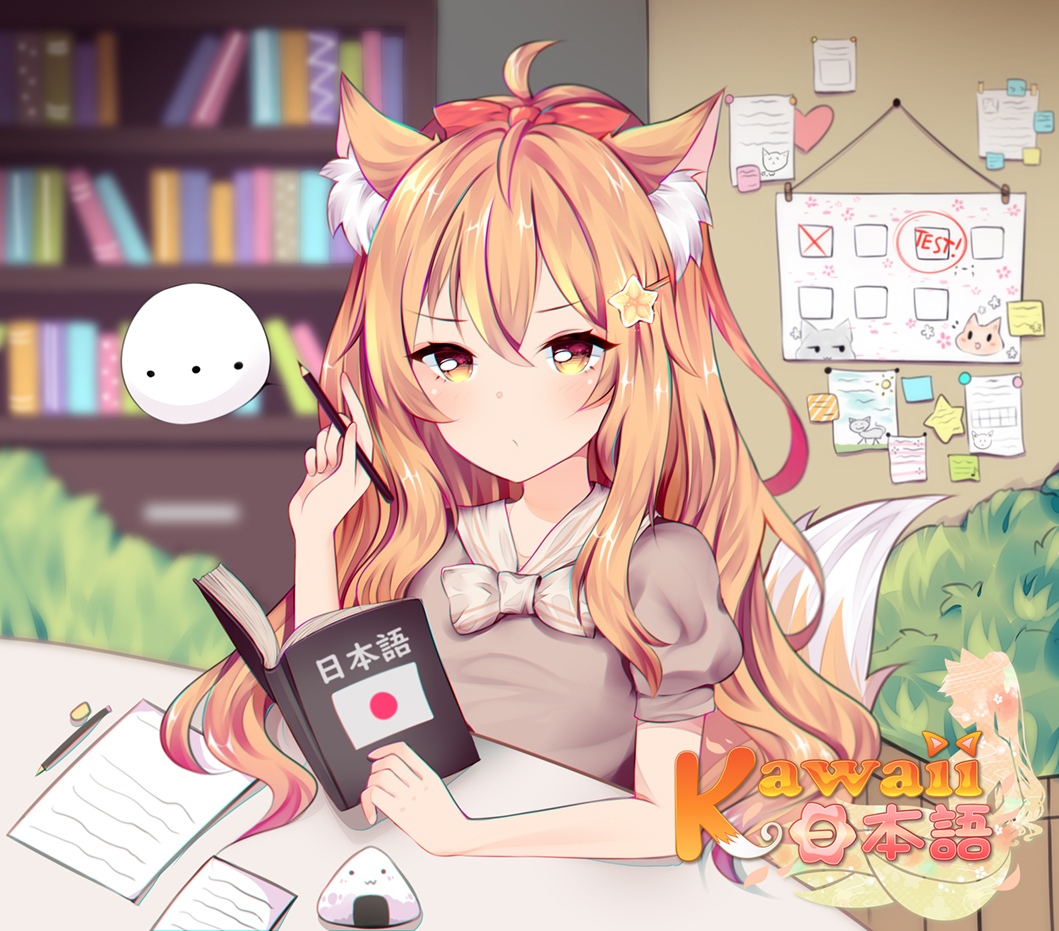
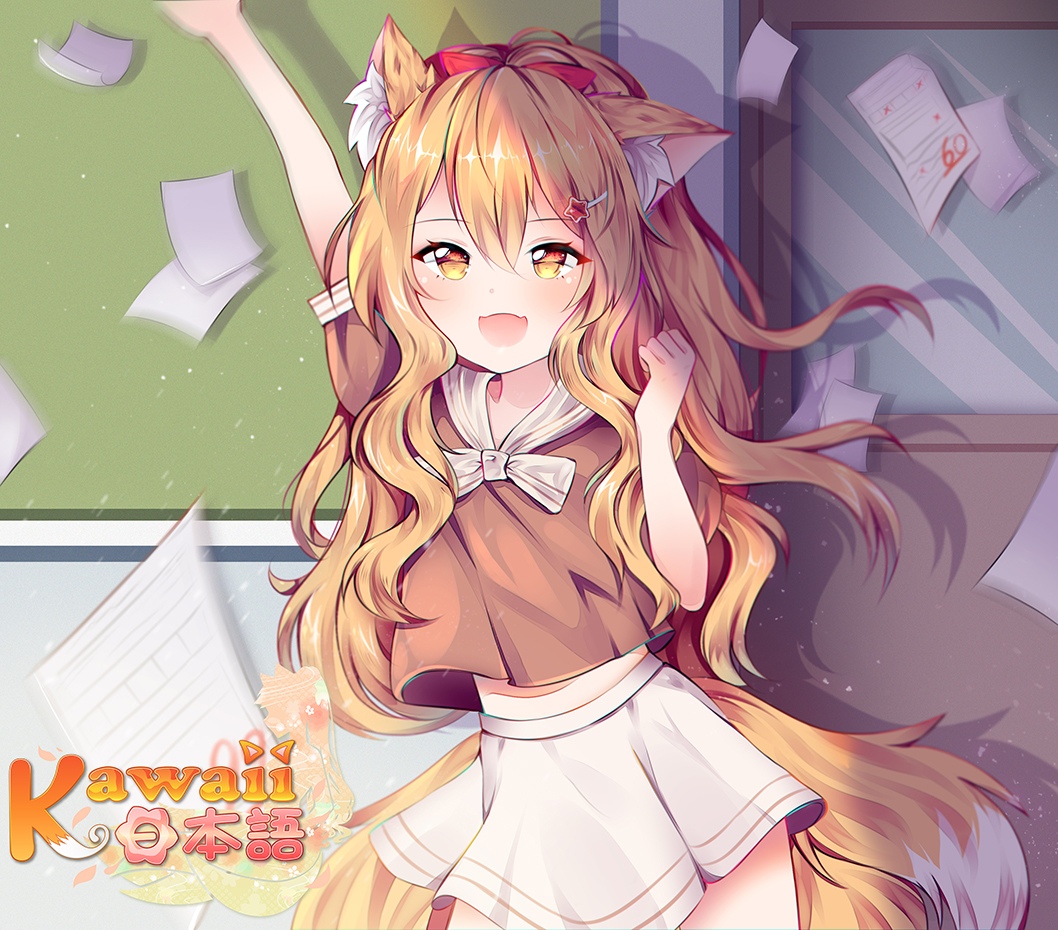
Images via KawaiiNihongo’s Twitter account and KawaiiNihongo



